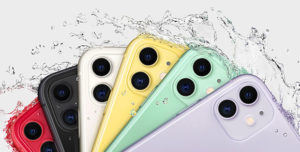
Why do so many companies keep slapping their customers in the face and expect them to stick around? Remember the good old days, when an update or an upgrade was good news? It solved problems. Today, updates often create new problems in their wake. Today, updates are two steps forward and one step back.
Updates and upgrades used to be welcome news. They used to build a company’s brand. Today, however, they often negatively impact the usability of products and services — and that hurts the brand.
Think I’m crazy? Let me run through a list of a few updates and upgrades that may open your eyes.
Good-bye Traffic Reports, Good-bye Surfing
Toyota and Lexus make great cars. I have been buying them for years and have loved them. Recently, though, their upgrades to the navigation and electronics systems have been two steps forward and one step back.
The navigation used to work with Sirius XM radio, and it provided live traffic conditions, but only on the major highways. That was an excellent product, which built the Toyota and Lexus brands.
However, they are now moving away from Sirius XM and changing to HD signal. This provides much better traffic and weather coverage where there is an HD signal. It shows traffic on more streets in the city.
The problem is, it drops traffic coverage altogether where there is no HD signal. So Toyota says to connect your smartphone to its app to continue to get traffic and weather coverage.
That works — sometimes. When it does not work, you get no live traffic, even on the interstates. That means you do not get traffic coverage on some highways that used to be covered by Sirius XM. This is hurting the Toyota brand.
What Toyota should have done was adopted a scaled approach until the new HD service was proven. It should start out with HD signal. When no HD signal is present, it should utilize its smartphone app. If no service is available there, it should revert back to the Sirius XM signal.
The bottom line is that customers always should be able to access the information they need — and used to be able to get. The problem is, they can’t.
Every company should think about this from the customer perspective rather than a corporate perspective. Toyota is damaging its own brand by moving two steps forward and one step back.
Comcast and Time Warner Cable are two more examples. Users were happy being able to hit their channel up or down button and surf to find the show they want. Since we’ve been forced to update to a digital signal, however, it takes longer to change channels — so there is no more surfing.
In addition, there are often problems with the new digital signal, which means users have to make regular calls to customer service to send refresh signals. Sometimes that works, and sometimes it doesn’t. The bottom line is that these companies are damaging their brand relationships with their customers by thinking from a corporate perspective rather than a customer perspective. Two steps forward, one step back.
Hello, Service Bills, Hello Aggravation
What about all your home appliances? Yesterday your refrigerator, stove, oven and dishwasher used to last a good 10 to 15 years without service. Today you’re likely to have service issues every year or two. Over the course of the next 10 years, your service bills may equal what it would cost to buy brand new devices instead.
Of course, that’s not an option, because the new devices will have service problems every couple years as well.
So, companies like Frigidaire, Whirlpool, Maytag, Hotpoint and others are damaging their own brands with the customers who used to love them.
You would think Apple was bulletproof. It used to be — but not anymore. Today, it screws up just like the rest of corporate America.
Remember a few years ago, when Apple wanted to move away from Google Maps for navigation? Its iOS update offered a new version of Apple maps and navigation. Do you remember reading the horror stories?
What about last year’s iOS update, which changed the look and design? Did this do anything new or better? I don’t think so. It was just different. Why?
People have their own lives and don’t have time to relearn operating systems for no good reason. These updates damage Apple brand relationship with its customers.
Microsoft is another problem. Every time it upgrades its Windows operating system, it forces customers to figure out how to use the software. This is a time-consuming aggravation that most customers hate.
Microsoft should update and upgrade its software — that’s what customers expect. However, customers don’t want to spend time every couple of years going through a learning curve.
So, Microsoft should keep its OS working the same so customers are not inconvenienced. The changes should be made behind the scenes. However, that means thinking about this from the customer perspective, and Microsoft is another company that doesn’t do that. Instead, it thinks about it from the corporate perspective.
This hurts the Microsoft brand with its customers. In fact, every move described above hurts the company’s brand relationship with its customers. Is that really what these companies want? I can’t imagine that. However, they keep heading in this same direction, year after year.
Enough examples? Convinced? I hope so.
Corporations vs. Customers
Companies used to come out with updates and upgrades that made our lives easier and better. Today, they don’t. Too often, they make our lives harder and more aggravating. The problem is that companies no longer think about the user.
That’s why they continue to take two steps forward and one step back with their updates and upgrades. They continue to slap their customers in the face, yet expect good results.
Companies have executives, and they are people too. They should understand how much of a pain in the neck it is dealing with the products and services in their lives.
I see no solution. Every company must understand the problem and be concerned with solving it — be concerned with the customer reaction. Every company should be concerned with building its brand, rather than causing harm to it.
Companies should be interested in taking two steps forward — period. It’s that one step back that will eat away at their brand relationships with customers.That’s the last thing any company should want.























































Social Media
See all Social Media